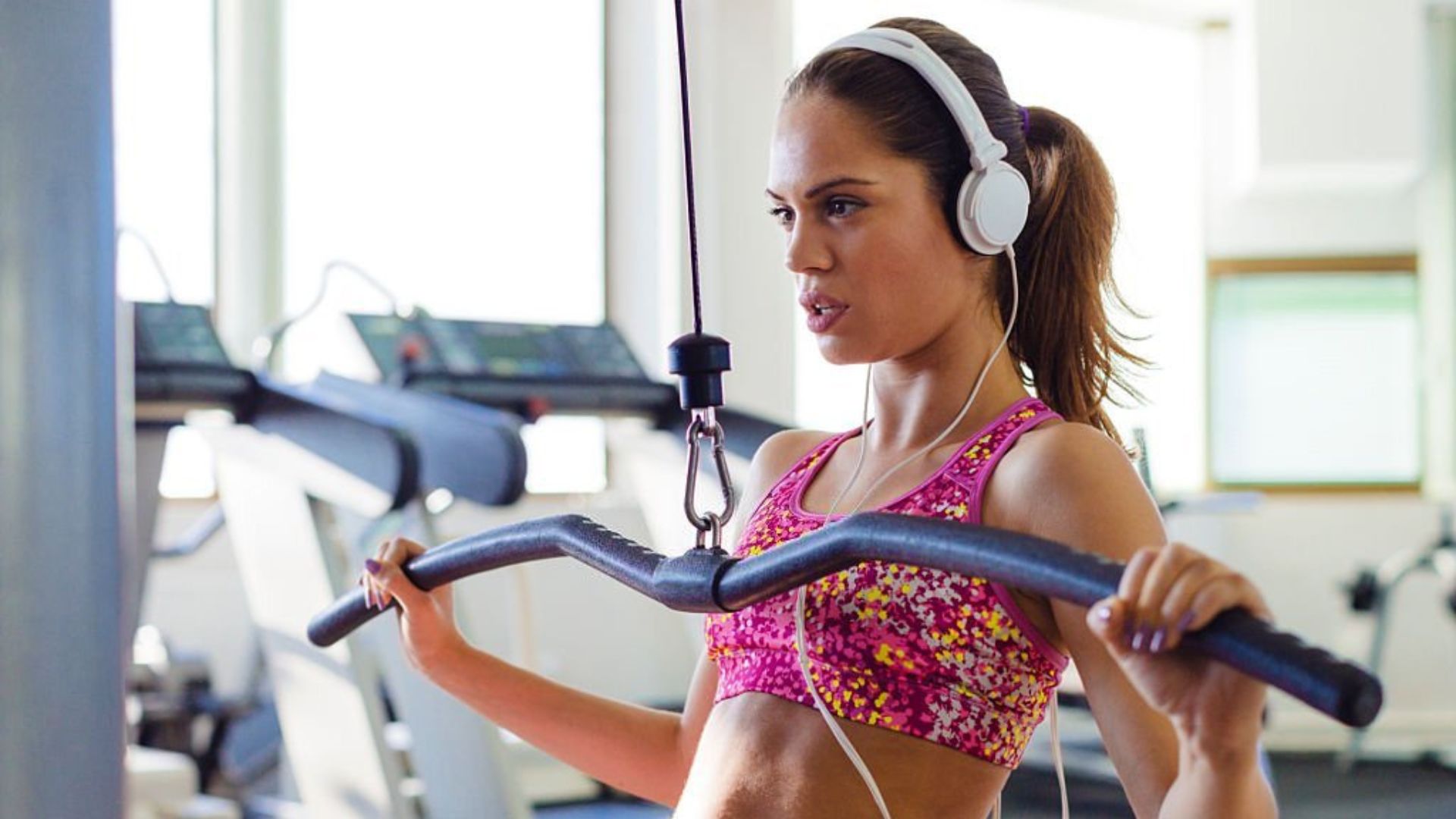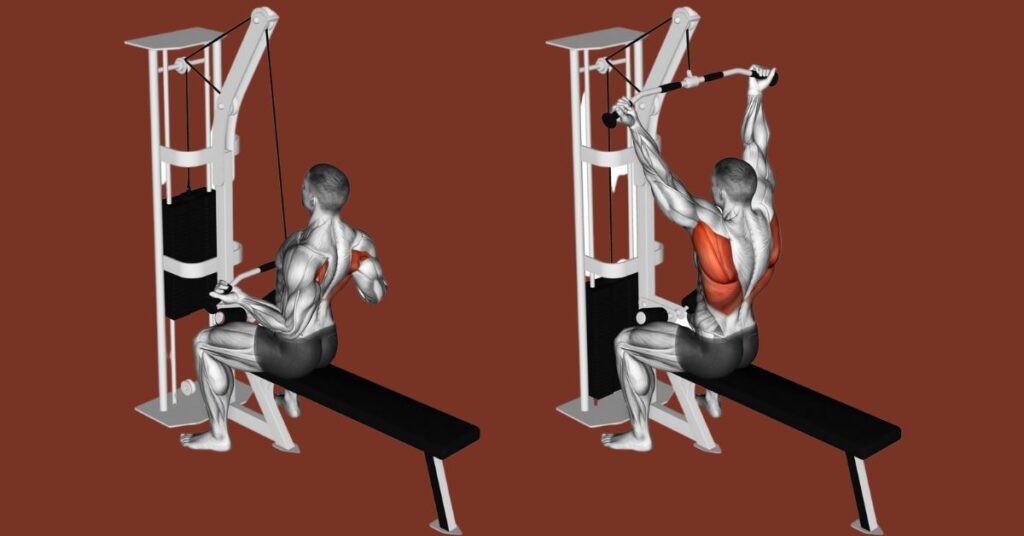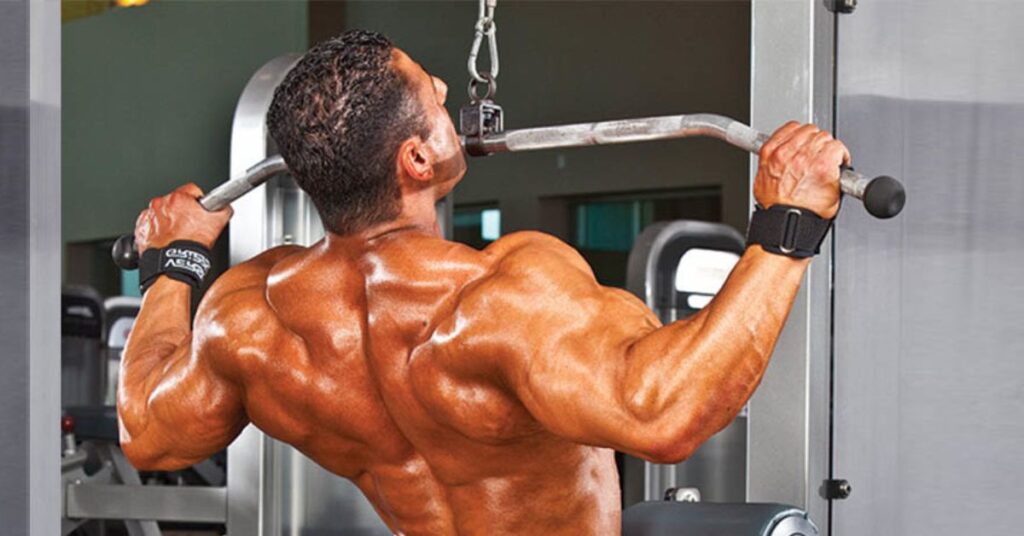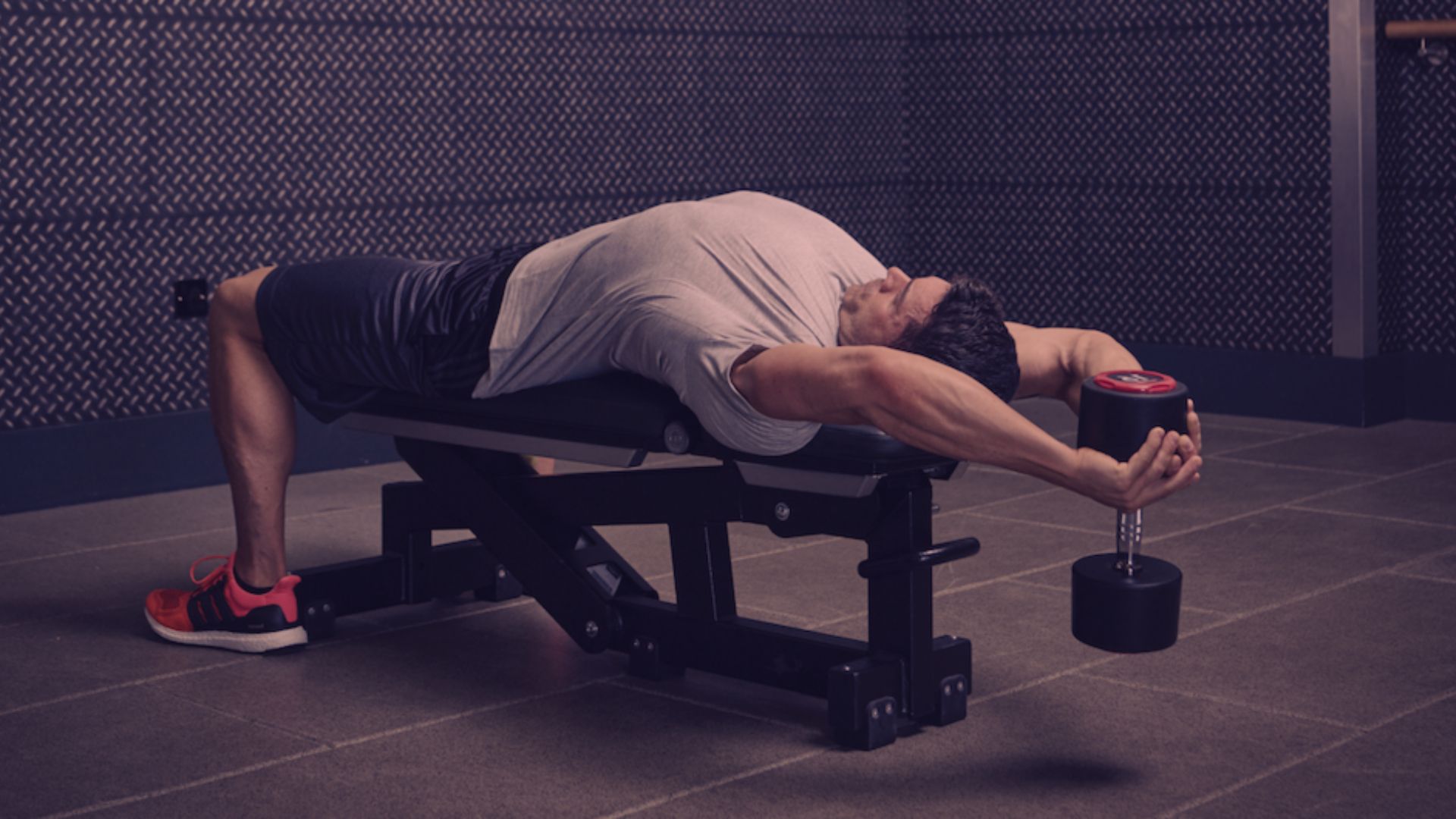
Close Grip Lat Pulldown: Benefits and How to Do It Correctly
Lat pulldowns are an important exercise for strengthening your back. However, with different grip sizes and hand positions, it’s difficult to determine what you need to do with this exercise for the most effective results.
In this article, we’ll discuss the difference between close grip lat pulldown and wide grip lat pulldown. We’ll also teach you how to perform an close grip pulldown properly.
Close Grip Lat Pulldown
The close grip pulldown sometimes referred to as the close grip lat pulldown, is among the most effective exercises for strengthening your back. This particular exercise will aid in improving your arm strength and posture. Close grip lat pulldown is an ideal exercise for all fitness levels.
Close Grip Pulldown: Working Muscles

Primary Muscle Group
In light of its name, it should come as no shock that the close-grip lat pulldown is designed to work your lats. It is a muscle that originates in the lower mid back and it is the muscles of the latissimus dorsi holds the title of the broadest muscle of the back.
The lats of your body play a major role in many “pulling” exercises like the pulldowns of your lats as well as pull-ups and other rowing workouts.
Secondary Muscle Groups
Close grip lat pulldown includes the biceps, shoulders, abs, and the upper back. While your back is expected to perform the majority of the work in bringing down the weight, the biceps must also contract fully.
Your core also works to help stabilize motion.
Close Grip Lat Pulldown: Benefits

#1 Stronger And Bigger Lats
In comparison to the standard lat pulldown, close grip lat pulldown provides extended flexibility of motion. Close grip attachments allow you to lower the weight slightly higher than you could do using a larger grip.
This means that you will increase the strength of your lats towards the lower end of each rep which can help build stronger and thicker back muscles. A solid back is vital for enhancing your performance in sports, everyday activities and other compound lifts like those of the Barbell Row as well as pendley row.
#2 Improved Posture
Sitting for long periods on chairs while at work, or driving could cause an insufficient use of your lats and back muscles. In turn, this can cause slouching and tension, and pain in your back and shoulders.
Close grip lat pulldown will assist in strengthening these less-used muscles as well as alleviate back pain and discomfort. Through regular training and repetition, you will be able to improve your posture quickly.
#3 Increased Confidence
Your lats perform the majority of the lifting and lifting, the close grip lat pulldown will also work your biceps. Biceps muscles should enable you to lower more weight than you’d normally be capable of lifting. This could provide you with a boost of confidence and motivation to complete your exercise.
While you must push yourself towards reaching the next level, make certain to follow the correct form to avoid injury!
Close Grip Pulldown: Instructions
Equipment
To complete this exercise it is necessary to have an electric cable and an attachment for a close grip pulldown.
Setup
- You should sit on the lap pulldown bench while looking at the machine.
- Make sure your legs are in a comfortable place under those knee pads.
- Extend your arms up to grab the attachment to close grip, keeping your palms facing one another.
Instructions
- While leaning slightly back, you can brace your core. Bring your shoulder blades back and up, and then push the attachment until it touches your chest.
- Pause briefly at the bottom, then squeeze your lats, and then slowly return to your starting position.
- Maintain your tightness in your core, and repeat!
Recommendation
The goal is to complete three to four sets that consist of between 10 and 12 reps for close grip lat pulldown. However, as you become more comfortable with the technique, feel free to vary the rep range and sets to test yourself.
Close Grip Lat Pulldown: Mistakes

#1 Pulling Too Low
Many weightlifters prefer to use the attachment for a close grip lat pulldown beneath their chests, and sometimes all the way towards their waist. Once the attachment has sunk below the chest and the back is not in a position to be engaged.
In this position, your shoulders are stretched and very little effort is being put into it. Do not pull downwards when the attachment is close to your chest. Then, tighten your lats. There are times when less is not always better when you are training correctly!
#2 Using Your Arms Too Much
A lot of the time, your arms dominate the exercise movements in the close grip pulldown. Close grip lat pulldown transforms into an exercise for the bicep which significantly reduces the strain on your back.
While the biceps must be a second-string player in pulling down, you could make sure to lower the weight without assistance from your arms, focusing on strengthening your back.
#3 Using Momentum To Pull Down
When lifters use the force of their bodies to pull their weight back down they’re almost always lifting excessive weight. This is why they move their upper bodies in a circle to adjust.
In actuality, it’s not helping you gain strength for your back. If you’ve made this error you should try reducing the weight and keep your back in a steady position in the close grip pulldown, to increase tension on your back.
Close Grip Lat Pulldown: Variations
#1 Reverse Close Grip Lat Pulldown
Close grip reverse pulldown demands more core stability and a mind-muscle connection. Begin by sitting back from the lat pulldown device. Extend your arms up to grasp the attachment for a close grip while your palms are facing each other.
Leaning back a bit while leaning slightly back, you should brace your core. lower your shoulders and back, and then pull the attachment until it is in contact with your chest. Take a moment near the end, clench your lats and then slowly return to your starting position. Stay tight in your core and repeat!
#2 Supinated Lat Pulldown
Supinated lat pulldowns are another option that targets the biceps better than the typical lat pulldown. Begin by sitting on the bench and facing the machine. Reach your arms up to grasp the pulldown bar of the lat while your palms are facing you.
The hands must be approximately two inches apart. As you lean back slightly and brace your core by bringing your shoulders back and back, then pull the bar back until it is at the top of your ribs.
Take a moment near the top, then squeeze your lats and then slowly return to your starting position. Keep your core tight and repeat!
#3 Alternating Lat Pulldown
You can also unilaterally work your lats using the pulldown of alternate lats. Begin by sitting on the bench and facing the machine. Move your arms upwards and grasp the handles, keeping your palms in front.
Engage your right lat to lower the right handle. Repeat the same movement on the left. Then, slowly return every handle back to the initial position, and repeat!
Close Grip Lat Pulldown: Alternatives
If you loved the pulldown with a close grip take a look at these back exercises that will help improve the strength of your upper body:
#1 Chin Up
Begin by grasping the bar with your palms facing you, and your hands spaced shoulder-width apart. Push yourself upwards until your chin is over the bar. Return slowly to your starting position. Repeat!
#2 Resistance Band Close Row
The band should be secured around a pole or a similar object that is stable at chest level. Take the handles while your palms are with your palms facing each other. Step backward, creating tension within the band.
While keeping hands together while you hold your hands together, tighten your lats and pull the handles toward your chest. Make sure you squeeze your lats as hard as you can while in this position, then return to the original position. Repeat!
#3 Dumbbell Lat Pullover
Get your dumbbell or two and sit down on your exercise bench. Relax on the bench and set your feet flat on the floor. Lean back to ensure that your head is positioned on the other side of your bench. Lift the dumbbells in a row, side-by-side, just above your chest, with your palms in front. Engage your core muscles by bringing your belly button toward your spine.
Keep your hands straight press your lats, and gradually bring the dumbbells back until they line up to your head. Press your lats with a firm squeeze at the bottom, then tighten your chest so that the dumbbells return to their starting position. Press your chest with force when you are in that position.
Keep your core tight and do it again!
Close Grip Pulldown Vs Wide Grip Pulldown

There are a few key distinctions between the close grip and wide grip pulldowns.
Wide grip pulldown is typically made using straight bars with an extended (overhand or your palms facing downwards) grip.
Close grip lat pulldown could be performed pronated or supinated (palms facing upwards or downwards) as well as neutral (palms facing one another) and is possible using a straight bar, or a V-grip attachment.
What You Do Each
While the wide and close grip pulldowns have a lot in common, however, there are two major distinctions in the way you perform each move.
When performing pulling down with a wide grip ensure that your torso stays in the most upright position possible. keep your elbows in a vertical position with the bar pointing towards your upper chest or your chin.
When performing close grip lat pulldown the user will lean slightly back and then pull your elbows back and down, with the attachment toward your lower chest or your sternum.
Muscles Used
Although both workouts help to strengthen your back muscles both will specifically target specific muscles of the back area more.
The wide grip pulldown targets the latissimus Dorsi muscle as you keep a horizontal torso and push the bar down straight.
Close grip lat pulldown is designed to target the upper and middle back (the trapezius and the rhomboids) while leaning back, pulling your elbows forward and downwards to pull the bar towards your lower chest.
Utilizing a supinated grip for the close grip pulldown will also require the biceps a lot more than an open neutral grip or a grip with a wide pronated.
Weights Used
Close grip pulldown typically permits people to lift more weight due to the more involvement of the musculature in the mid-back.
Based on my experience, I can take about 10% more force using a tight grip as compared to a broad grip.
Cons Of Close Grip Lat Pulldown
They are not as focused. Many lifters utilize vertical pulling to target the lats in their workout. When you perform close-grip lat pulldowns, you might not get the result you expected when compared to the wider grip.
For lifters with more advanced skills loading may be an issue. As most lifters can use more load due to the tighter grip as well as stronger or more advanced lifters might be limited by the capacity of a lat pulldown machine.
Cons Of Wide Grip Lat Pulldown
It’s not possible to use the same amount of load. If you’re trying to build the strength of your back and flexibility, a close grip variant may be more suitable for you because loading is usually smaller when using the lat-targeted grip.
Wide Grip Lat Pulldown Vs Close Grip Lat Pulldown: Which Is More Effective?
What grip width is best for lat pulldowns is contingent on your goals for training.
The wide grip pulldown is ideal for those looking to strengthen their lats with more intensity whether it’s for hypertrophy or strength. It’s also a good choice for those who are interested in strengthening their pull-ups or just looking to perform a workout in a larger repetition range than what they achieve using pull-ups.
Close grip lat pulldown is ideal for those who want to boost their back strength because it allows for more weight. It’s also a good choice for those who want to strengthen their trapezius or rhomboids in addition to their lats.
But, both options could be beneficial to your program of training when you’re working with a variety of back sizes and goals for strength.
Do You Need To Lean Back When Performing A Pulldown?

In a lat pulldown, you’ll need to slightly lean back. Leaning slightly helps you build enough momentum to keep the weight moving but also remain in control. A lean that is too back shifts your focus away from the lats and rhomboids to the traps. However, not leaning even a little can limit the weight that you can apply. If you choose to use an unbalanced weight it will not be sufficient to encourage the growth of your muscles.
Last Words
While a grip with a wider width is a bit greater lat activation close grip lat pulldown places your arms in a more solid posture and allows you to generally pull heavier weight. So it’s a perfect supplement to your back exercises.
In reality, you could incorporate both grip widths into your exercise routine. You can also alternate the two from week to week to get your lats working from all angles.











